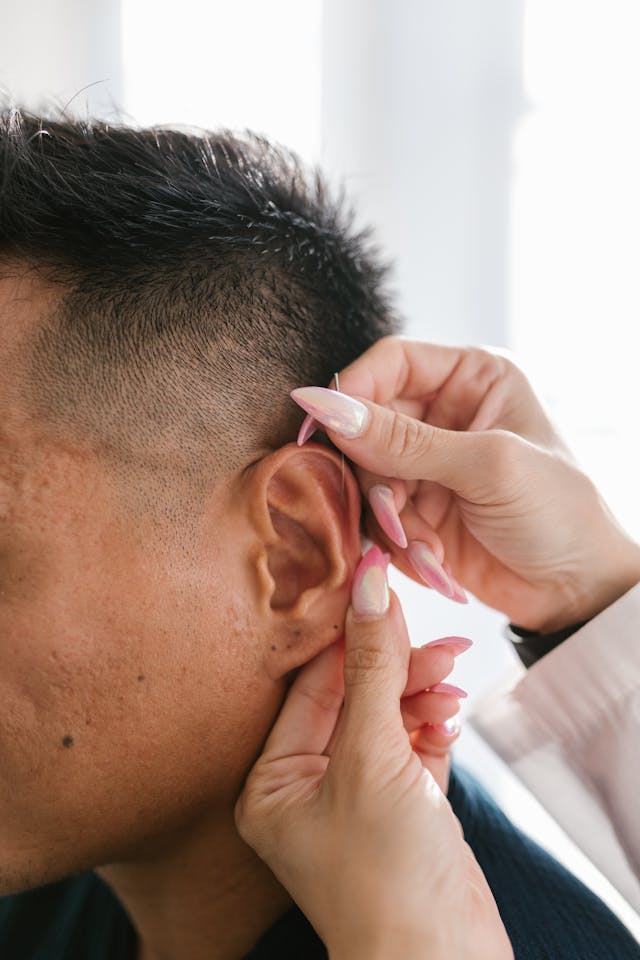 ActiveCare Physical Therapy, PC
ActiveCare Physical Therapy, PC
29 West 38th Street
Suite 601
New York, NY 10018

How Physical Therapy Can Help Treat Vertigo
In this post, we’ll explore how physical therapy can help treat vertigo, what to expect during treatment, and who may benefit most from this specialized care. Vertigo is a disorienting and often debilitating condition that affects a person’s sense of balance and spatial awareness. It can cause sensations of spinning, dizziness, and unsteadiness that interfere with daily life. While vertigo can arise from various medical causes, many forms—especially those linked to the vestibular system—respond very well to physical therapy.

What Is Vertigo?
Vertigo is not a condition in itself, but a symptom that signals a disturbance in the body’s balance systems. It is often caused by issues within the inner ear (peripheral vertigo), but can also stem from neurological problems (central vertigo). The most common causes include:
- Benign Paroxysmal Positional Vertigo (BPPV): Occurs when tiny calcium crystals in the inner ear become dislodged and interfere with balance signals.
- Vestibular Neuritis or Labyrinthitis: Inflammation of the inner ear or its nerves, usually due to infection.
- Meniere’s Disease: A chronic condition that affects the inner ear’s fluid balance.
- Post-Concussion Vestibular Dysfunction: Imbalance and dizziness after head trauma.
Symptoms of Vertigo
Vertigo can vary in severity and duration but commonly includes:
- Sensation of spinning or tilting
- Dizziness or lightheadedness
- Nausea or vomiting
- Unsteadiness or loss of balance
- Difficulty focusing the eyes or visual disturbances
How Physical Therapy Can Help
Physical therapy for vertigo—specifically vestibular rehabilitation therapy (VRT)—is an evidence-based, non-invasive approach that addresses issues related to balance and the inner ear. A licensed physical therapist trained in vestibular disorders creates a personalized treatment plan based on the root cause of your vertigo.
1. Canalith Repositioning Maneuvers
If your vertigo is caused by BPPV, a physical therapist may perform repositioning techniques such as the Epley Maneuver or Semont Maneuver. These involve guiding the head and body through a series of movements to reposition dislodged crystals in the inner ear canals, relieving vertigo symptoms—often in just one or two sessions.
2. Gaze Stabilization Exercises
These exercises are designed to help improve visual focus and reduce symptoms such as blurry vision and dizziness. One common method involves moving your head back and forth while keeping your eyes focused on a fixed point.
3. Balance and Postural Training
A key part of vestibular rehab is improving your sense of balance and coordination. Therapists will guide you through standing and walking exercises on stable and unstable surfaces, helping retrain your brain and body to better manage movement and orientation.
4. Habituation Exercises
If your vertigo is triggered by certain head movements or positions, therapists may use repeated exposure to those movements in a controlled way to desensitize the brain and reduce symptoms over time.
5. Strength and Mobility Work
To reduce the risk of falls and improve mobility, physical therapists may incorporate lower body strengthening and flexibility exercises into your routine—particularly for older adults.
Who Can Benefit from Vestibular Physical Therapy?
Physical therapy is especially helpful for patients with:
- BPPV (the most common form of positional vertigo)
- Post-viral vestibular dysfunction
- Post-concussion dizziness or imbalance
- Mild Meniere’s disease symptoms
- Unsteadiness or motion sensitivity
It may also benefit individuals recovering from stroke or neurological conditions that affect balance and spatial orientation.
What to Expect During Your Visit
 Your first visit will involve a comprehensive evaluation of your symptoms, balance, gait, and vestibular function. Based on the findings, your physical therapist will develop a customized plan tailored to your condition. Treatment sessions are generally brief and can produce rapid improvements, especially in cases of BPPV.
Your first visit will involve a comprehensive evaluation of your symptoms, balance, gait, and vestibular function. Based on the findings, your physical therapist will develop a customized plan tailored to your condition. Treatment sessions are generally brief and can produce rapid improvements, especially in cases of BPPV.
How Physical Therapy Can Help Treat Vertigo: Conclusion
Vertigo can be disruptive and distressing, but effective relief is possible through vestibular physical therapy. Whether your symptoms are mild or severe, a skilled physical therapist can help diagnose the root cause and implement targeted, drug-free treatments to restore your sense of balance and improve your quality of life.
If you’re experiencing recurring dizziness or imbalance, don’t wait—seek help from the expert physical therapists trained in vestibular rehabilitation at ActiveCare Physical Therapy in NYC.
ActiveCare Physical Therapy™
Dr. Karena Wu, PT, DPT, OCS
29 West 38th Street, Suite 601
New York, NY 10018
Phone: (212) 777-4374
Email: staff@bestptnyc.com
Website: https://activecarephysicaltherapy.com
